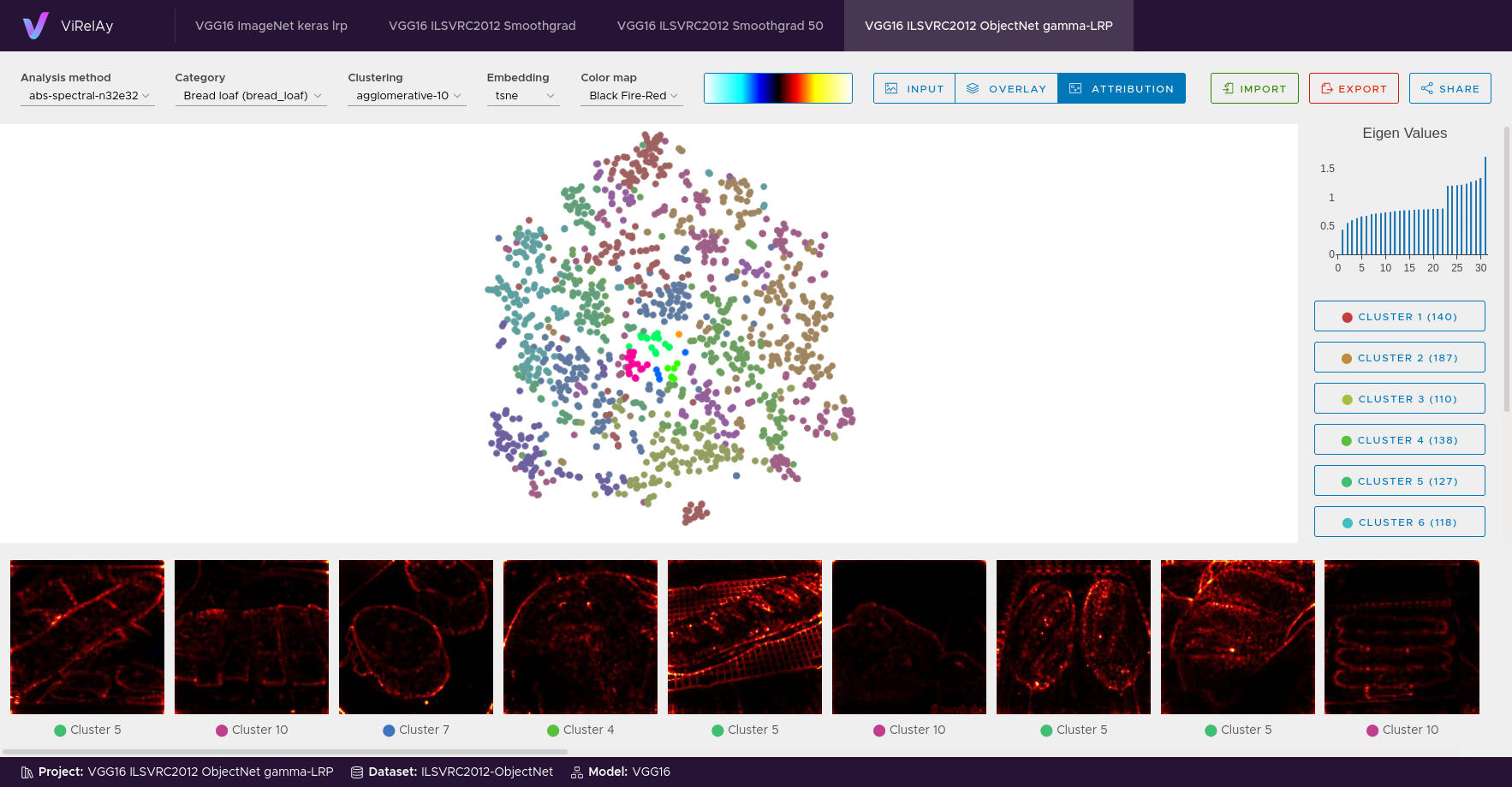ViRelAy Documentation

Welcome to the documentation of ViRelAy, a visualization tool for the analysis of data as generated by CoRelAy. It runs a small website to view and interact with data representations using clusterings and embeddings, the corresponding source data and an auxiliary per-sample representation (i.e., the attribution). With this, ViRelAy attempts to simplify the analysis of classifiers and their underlying datasets. Currently, only image data is supported, and the auxiliary representation is expected to be an attribution with the same shape as the input.

Figure 1: A screenshot of the ViRelAy user interface.
Contents
This documentation is split up into four sections: Getting Started, which contains basic instructions on how to install and use ViRelAy, a User Guide, which goes in-depth into all features of ViRelAy and how to use it to analyze classifiers and datasets, a Contributors Guide, which explains the internal architecture of ViRelAy and how to contribute to the project, and an API Reference, which contains detailed descriptions of the modules, classes, methods, and functions included in the ViRelAy backend API and is mainly aimed towards developers who want to contribute to the project.
Indices & Tables
Citing
If you find ViRelAy useful for your research, why not cite our related paper [Anders et al., 2021]:
@article{anders2021software,
author = {Anders, Christopher J. and
Neumann, David and
Samek, Wojciech and
Müller, Klaus-Robert and
Lapuschkin, Sebastian},
title = {Software for Dataset-wide XAI: From Local Explanations to Global Insights
with {Zennit}, {CoRelAy}, and {ViRelAy}},
journal = {CoRR},
volume = {abs/2106.13200},
year = {2021},
}